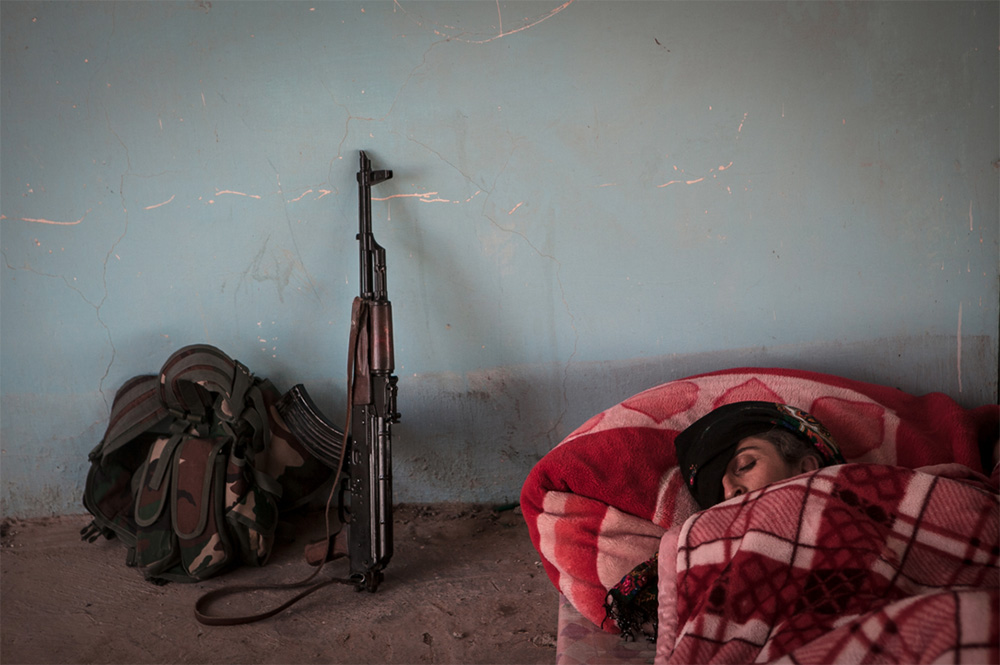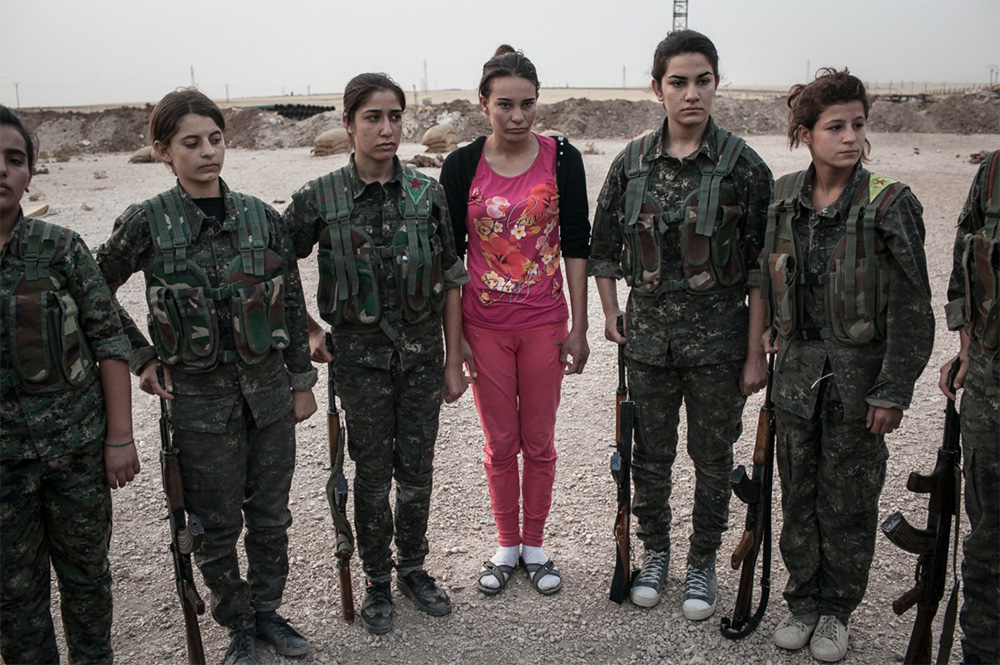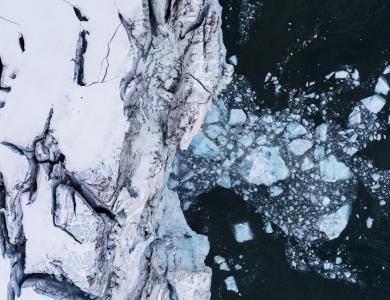
This blog is part of a series of exclusive interviews with the winners of United Photo Industries’ (UPI) pioneering Brooklyn-based public photography installation THE FENCE.
---
Erin Grace Trieb (b. 1982) grew up in Dallas, Texas and earned a Bachelor’s of Science degree in photography from Texas A&M University-Commerce in 2004. Erin specializes in long-term, in-depth documentary projects, which explore societal trends, cultural trauma and identity. Her work spans a diversity of subject matter from international conflict to local feature stories.
Currently traveling between Iraq and India, Erin photographs for a wide variety of clients including TIME Magazine, The New York Times, NBCnews.com, Newsweek, The Times of London, and The Wall Street Journal.
First of all – Please tell us a bit about yourself and how you got into photography
I have taken pictures since I was a child. My mom bought me a point-and-shoot camera when I was 7, and I fell in love. She would take me to the lab to get my film developed once a week, and then I’d arrange the photos in chronological order in albums. It all started from there.
You earned you Bachelor’s of Science degree in photography from Texas A&M University. At what point did you realise you wanted to pursue photojournalism as opposed to other photographic genres?
My degree revolved mostly around commercial and editorial photography. But in college I saw an exhibition on the WWII holocaust that had a profound effect on me. I remember feeling awe-struck and completely transformed by the images I saw, and wanting to pursue a life where I could photograph issues that would impact others in the same way. Although I didn’t really know what or how it would happen, at age 19 I knew I wanted to document important issues with a camera.
You are featured in THE FENCE 2015 with your series ‘We are the YPJ’, a series documenting the life of Kurdish female soldiers. Can you tell us a bit about the series and how you approached the soldiers - How much time did you spend with the women and how did they react to having you there?
In 2009 I began documenting the US military. Since then, I’ve been drawn to soldiers, their way of life, their discipline, and the psychology behind why they fight. When I found out about the YPJ I felt instantly compelled to observe and photograph them. I think one of the most fascinating features of this military group is that they are unpaid volunteers, and they are totally consumed with the ideology of “Abdullah Ocalan” (their leader) and defending the Kurdish people. Off an on I’ve spent a total of about three weeks with them throughout the past year. They are not easy to access and finding the right group whose daily life illustrates the conflict in Syria is a challenge. But they were very open and warm to me from the moment I arrived.

You concentrate on long-term, in-depth documentary projects that explore societal trends, cultural trauma and identity. Could you tell us a bit about the process you go through when starting on a new project?
With every project it’s a different process. With some projects, like ‘The Homecoming Project’, I did a lot more listening than I did photographing, because that’s what the story called for and needed. I think the most important thing for me personally is to have a fierce connection to the story and the people I’m photographing. If I don’t feel something towards them or their situation, then it will show in my photographs, and I won’t be able to fully communicate their experience and connect emotionally with readers.
In 2011 you founded The Homecoming Project, an awareness and education campaign which highlights the social effects of post-war trauma on US military returning home from Iraq and Afghanistan. Can you tell us a bit more about the project and how it started
The Homecoming Project grew out of a desire to give my images of US service members a second life after they were published, and to see if I could use photography to create further conversations about PTSD outside of traditional media platforms. In 2011, a friend of mine said; “What if you started displaying your work in public spaces and drew attention that way?” and it took off from there. The vision has morphed since its inception, but the mission has stayed the same: to use visual journalism and media to raise awareness of veteran issues related to war and trauma. Since 2011 I’ve had the privilege of displaying my photography, the photography of my colleagues and US veterans in exhibitions all over the United States and Europe, we’ve had over 50 exhibitions which have reached thousands of audience members, and the project has gathered considerable media attention from outlets such as TIME.com, The New York Times, and Newsweek. It’s been a labor of love and a lot of hard work, but it’s one of the more rewarding projects I’ve pursued. I consistently get emails from strangers saying, “Your exhibition helped me to understand what veterans are dealing with when they come back from war,” which is why I keep doing it.
What are you working on at the moment?
I moved from Texas to Istanbul in the summer of 2015, and since then I’ve been completing a lot of various assignment work in places like Iraq, Europe and Africa. I’ve got a good amount of personal projects underway but right now I’m working on some shorter features for magazines and still getting settled in my new base, which has been a new adventure all by itself.
@erintrieb
fence.photoville.com


